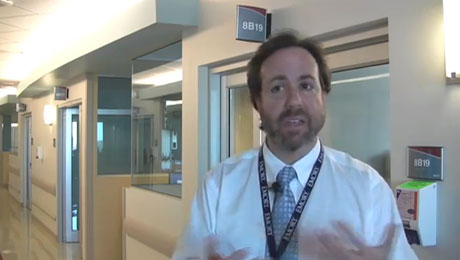Atrial Fibrillation
Tuesday, February 26th, 2013
U.S. Pharmacist: February 20, 2013 ABSTRACT: Antiarrhythmic therapy for atrial fibrillation comprises a broad range of medications that are used to prevent conversion from normal sinus rhythm to atrial fibrillation, as well as to control symptoms. These medications, although effective, require extensive monitoring and patient education. The antiarrhythmics most commonly used to maintain normal sinus […]
Atrial Fibrillation
Tuesday, February 26th, 2013
Europace Oxford Journals: February 20, 2013 Aims Cryoballoon ablation (CBA; Arctic Front, Medtronic) has proven very effective in achieving pulmonary vein isolation. Real-time three-dimensional transoesophageal echocardiography (RT 3D TEE) is a novel technology, which permits detailed visualization of cardiac structures in a 3D perspective. The aim of the present study was to assess the feasibility, advantages, and […]
Atrial Fibrillation
Tuesday, February 26th, 2013
U.S. Food and Drug Administration: February 15, 2013 Public Comment You may submit written comments and suggestions at any time for Agency consideration to the Division of Dockets Management, Food and Drug Administration, 5630 Fishers Lane, rm. 1061, (HFA-305), Rockville, MD, 20852. Submit electronic comments to http://www.regulations.gov. Identify all comments with the docket number listed in the […]
Atrial Fibrillation
Tuesday, February 26th, 2013
PMJ.BMJ: February 12, 2013 Abstract Atrial fibrillation, the commonest cardiac arrhythmia, predisposes to thrombus formation and consequently increases risk of ischaemic stroke. Recent years have seen approval of a number of novel oral anticoagulants. Nevertheless, warfarin and aspirin remain the mainstays of therapy. It is widely appreciated that both these agents increase the likelihood of bleeding: […]
Clinical Trials
Tuesday, February 26th, 2013
J Am Heart Assoc.: February 19, 2013 Background Vitamin K antagonist (VKA) therapy remains the most common method of stroke prevention in patients with atrial fibrillation. Time in therapeutic range (TTR) is a widely cited measure of the quality of VKA therapy. We sought to identify factors associated with TTR in a large, international clinical trial. Read […]
Therapies
Tuesday, February 26th, 2013
Lancet Neurology: March 1, 2013 Ischaemic stroke is one of the leading causes of death and disability worldwide, and intravenous alteplase is the only proven effective treatment in the acute setting. Hypothermia has been shown to improve neurological outcomes after global ischaemia—hypoxia in comatose patients who have had cardiac arrest, and is one of the most […]
Guidelines
Tuesday, February 26th, 2013

U.S. Food and Drug Administration: February 15, 2013 Public Comment You may submit written comments and suggestions at any time for Agency consideration to the Division of Dockets Management, Food and Drug Administration, 5630 Fishers Lane, rm. 1061, (HFA-305), Rockville, MD, 20852. Submit electronic comments to http://www.regulations.gov. Identify all comments with the docket number listed in the […]
News
Tuesday, February 26th, 2013

STROKEAHA: February 19, 2013 Background and Purpose—Guidelines recommend carotid endarterectomy (CEA) within 2 weeks from an ischemic event. However, previous studies have shown that only a minority of patients undergo CEA within this period. The aim of this study was to examine the effect of a multidisciplinary nationwide initiative aimed at reducing time to CEA after […]
News
Tuesday, February 26th, 2013
Medical Xpress: February 19, 2013 Heart and cerebro-vascular disorders represent the two leading causes of death throughout the world. They are sometimes combined in a single patient and their combination represents both a considerable risk to the patient and a therapeutic challenge. Read more
News
Tuesday, February 26th, 2013
STROKEAHA: February 19, 2013 Background and Purpose—A correlation has been found between periodontal disease (PD) and stroke. This study was conducted to investigate whether dental prophylaxis and periodontal treatment reduce the incidence rate (IR) of ischemic stroke. Methods—We identified 510 762 PD cases and 208 674 non-PD subjects from January 1, 2000, to December 31, 2010. […]






























